
8 Common Guitar Pickup Rookie Mistakes!
Lindy Fralin Pickups has been around for over 25 years, and in that time, we’ve seen all levels of guitar and bass player. From the bedroom hobbyist to the full-blown touring pro, we’ve all had to start somewhere. We’ve also seen all levels of guitar players make these simple mistakes, time and time again. This is our list of the 8 common “rookie mistakes” that can be easily avoided:
ROOKIE MISTAKE #1:
Choosing The Wrong Lead:
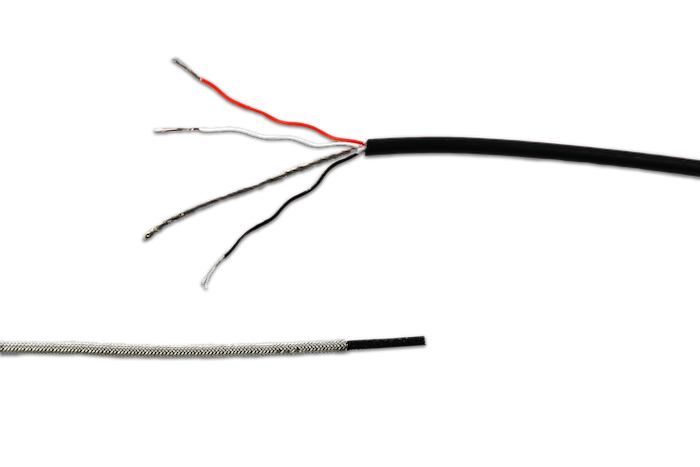
Not choosing the correct lead is one of the most common rookie mistakes, and it’s easy to avoid. Choosing the right lead when ordering your pickups will solve many headaches down the road. It will make your installation more manageable, and allow you to reverse the phase if need be.
We get a lot of emails with the subject line of “Help!”, and see a customer having a hard time installing a Gibson Lead in a Fender Tele. This lead won’t work for many reasons. The most common mistake we see: Buying a Single Pickup with an irreversible lead. An example would be buying a single P-90 for your Telecaster, with a Gibson Lead. Doing this will give you many headaches down the road – choose a 2-Conductor lead when ordering, and you’ll be set!
THE FIX:
Research the correct lead, and go for it. Here are some helpful rules of thumb:
- You Cannot Reverse Gibson Leads. Only get these when you’re buying a Set For A Gibson-style Instrument. These leads are designed to install in instruments where each pickup has its separate volume pot. Installing this lead in a Fender instrument will create all sorts of problems.
- 2-Conductor With Shield: The most overlooked, but essential lead. You can reverse the phase if need be, and since the lead is insulated, the shielding won’t short anything out in a cavity.
- 3 / 4 Conductor: For Humbuckers, these are super easy to install, and give you all sorts of options down the road. You can reverse the phase too!
Read our in-depth article on choosing the right humbucker lead here! It’ll clear things up.
ROOKIE MISTAKE #2:
CHOOSING THE WRONG POT VALUE
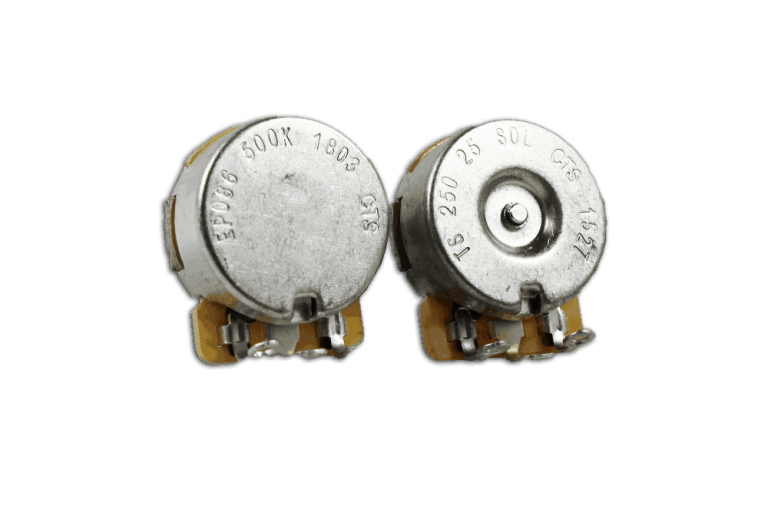
Not choosing the correct pot value is one of the most common rookie mistakes we see. Your Volume and Tone pots are the second most important aspect of guitar electronics – and for a good reason. Putting a Humbucker through a 250K pot will most likely sound like your amp has a “mud blanket” on it. A Telecaster with low-output single coils will sound pretty awful through 500K pots, too.
Knowing which pot value your pickup needs is the best way to solve this. Don’t be a rookie: check out our article here to become a pot-selecting wizard!
3.) Not Going To A Luthier When Times Get Tough
I get it. I’m a “do-it-yourself-er” too. I love getting my hands dirty and doing the work myself. However, sometimes, you have to quit before you start getting over your head. We answer a lot of questions from customers who are just way over their head with the soldering pencil in their hand.
We always recommend going to the professional the same way you’d go to a mechanic for your car. Luthiers are better equipped for the job, and most likely have the experience and specialized tools required to make your life easier.
Furthermore, creating a great relationship with a local luthier can be beneficial when you need help in a pinch – by supporting your local luthier and music store, you could get bumped to the front of the line if you need it!
4.) Killing Your Pickup Before You Install It
This one’s a heartbreaker: You just received your brand-new pickup. You unbox it, rip open your toolbox and start throwing the pickup into your guitar. You slip – and knick a coil wire.
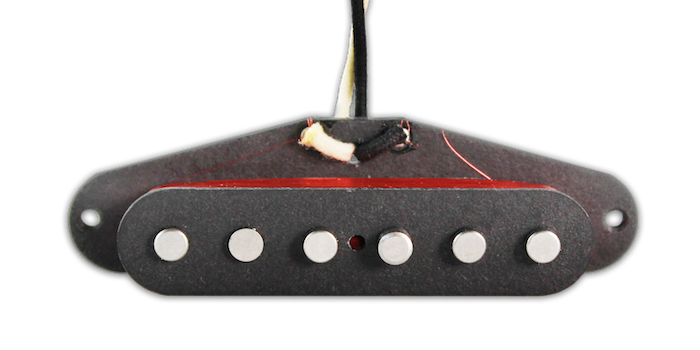
Ouch. Your brand-new pickup is dead, and you’re left to purchase a new one. Pickups are super delicate and fragile. The coil is about as thin as a human hair and can easily be damaged. Even experienced luthiers have this happen from time-to-time, so be careful!
Sometimes it’s the nature of the guitar – Telecasters are the number one cause for broken pickups, in our experience. Installing a Telecaster Bridge can seem simple, but one slip and your pickup is dead. Trying to remove a Tele pickguard when your Telecaster’s neck is still bolted to the body can also cause the neck pickup damage.
Lastly, guitars with an “extra fret” (where the fretboard hangs over the pickguard) require you to unbolt the neck before you can safely remove the pickguard and pickup. Just be careful and work slowly when installing your precious guitar pickups!
5.) Choosing The Wrong Spacing
A guitar is like a bike. It’s intricate with a lot of adjustments that can really affect the way that it plays and behaves. Your pickups sound best when you take the time to choose the right spaced pickup. Checking your String Spacing is easy to do – all you need is a ruler.
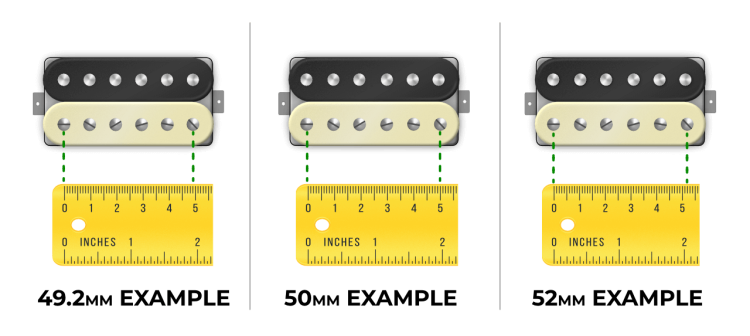
Most bridge pickups are going to have wider string spacing than neck pickups, due to the way the guitar’s strings taper towards the headstock. Knowing this will help you choose the correct pickup, and have all the strings sing at equal volume without dead notes!
6.) Getting Too Custom
Getting too custom? That’s one of the more popular rookie mistakes we see. We’re a custom shop, so we get the appeal of having a pickup or set no one else has. More often than not, our “super-custom-customers” wind up buying a popular calibrated set instead.
Why? Because the electric guitar has been around since the 1930s, and we’ve overturned many, many rocks on the way to great tone since then. More often than not, the best-sounding pickup set is the one that stands the test of time!
7.) Not Checking Your Polarity
This one is as heartbreaking as #4. You get your new pickup in, and it’s out of phase with your other pickups. You didn’t check your polarity! At Fralin Pickups, we can make a pickup any polarity you need, and we like to take the time at the beginning of your purchase to communicate with you regarding polarity. Why? Pickup Polarity is SO important.
For Single Coil pickups, you need to identify two aspects of your pickups’ polarity: Coil Direction & Magnet Polarity. Our guide shows you how to find both of these rather easily. Check out our guide here: What’s The Deal With Pickup Polarity?
For Humbuckers, make sure you get multiple leads – it’ll save you down the road by allowing you to reverse the polarity if need be! In essence, take your time to find out your pickup polarity, and rest assured that all pickups will work together.
8.) Not Setting Your Pickup Height Correctly
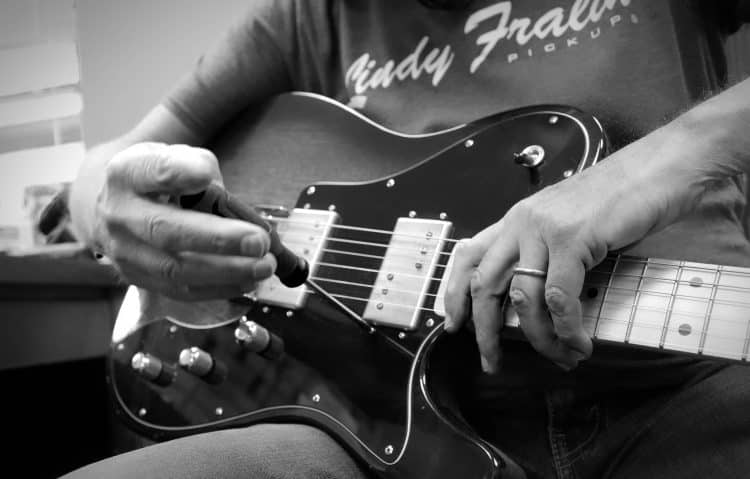
To close it out, this one is a common problem we hear all the time. It’s so easy to fix – and to diagnose. If the pickups are too high, you’ll get all sorts of unwanted tones caused by the magnetic field of the pickup. If they are too low, you’ll have a weak and underwhelming tone.
Here’s how to measure and check your pickup height. For starters, you always want to use your ears. Start by pressing the low E string on the highest fret, and measure the bass side of the pickup to the bottom of the string. Ideal starting point height should be about 1/8″. Now, do the same thing on the treble side – it should be 1/16″.
Once your pickup height is set to the optimal settings and everything sounds good, don’t forget to balance your strings as well: How To Optimize Your Pickup’s String Balance
Measuring your pickup height will make sure that your pickups are sounding – and working – at their best!
Well, that does it, for now! Take your time when selecting your options, and you’ll spare many headaches down the road!
Comments
48 Comments For This Post
Leave A Comment
Want to chime in to the conversation? Please do so! Please respect others.


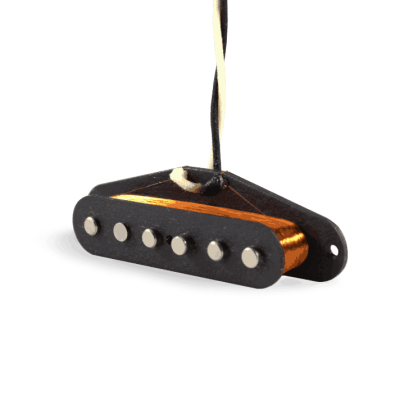
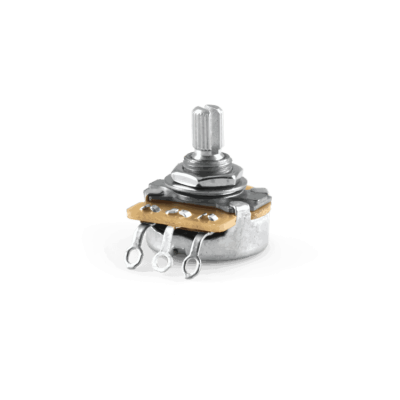
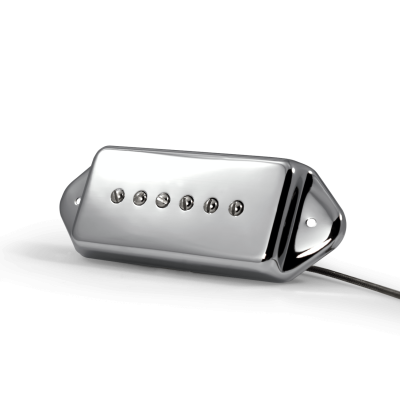
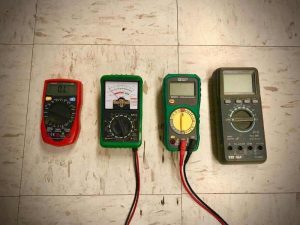

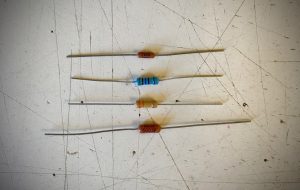


hi. totai noob to guitar guts. looking to put a P90 in the neck and HB in bridge. 2V 2T, 3 way toggle. just want the two to sound good together. have a multi meter and polarity tester. looking to use two wire(hot, ground) pickups that i already have. comfortable with moving magnets and soldering. looking for the simplest way to get it right the first time… thanks, steve
Hi, I recently got a 1991 Gibson Les Paul Studio Lite and was surprised by how very different it sounds compared to my father’s 1976 Les Paul Custom. The 1991 is significantly lighter as the body has chambers filled with balsa wood. It also has 496r and 500t pickups. Compared to the 1976, the sound is lifeless and very modern. My question is: how much does the body affect tone, would changing the pickups help make the guitar sound more like the 1976, and (off the wall) is there a pickup combo that would lend strat style warmth?
The hardwood/bolsa body should be a plus for tone. Are the bridges the same? One of the biggest tone-suckers is the saddle material and bridge installation. If those are the same, then yes it must be the pickups. You may have ceramic magnets with high ohm resistance – not a good choice for tone freeks, but a fine choice if you are driving a long chain of effects. However, you may want to try out different brands of strings and string gages before you replace the pickups.
I am making a Strat.
Neck=9-90
Middle =Fralin Split Rails Blues 500K
Bridge =Humbucker
What are the thoughts out here?? Any Help
Using three very different pickups in a guitar can give odd results. Output levels can vary quite a bit and the in-between sounds on a Strat platform may, or may not, be pleasing. And you will have to look out for phase relationships – getting all the coils / magnet polarities right. The guitar wont sound like a Strat. After all the original Strats had three (as close as came from the winders) identical pickups. All this ‘calibrated’ (different pickups in each position) nonsense is a more modern invention of the after market pickup makers.
Nice article to know much more on guitar parts and their installation process. It helps me to gain some ideas about the vital parts and their role. I have to replace the wraparound bridge part of my guitar and I believe this content helps me a lot to do this. Thanks a lot.
Hi there,
I have a 70’s Stagg J Bass. I bought it about 25 years ago and it was a used bass guitar once I purchased it.
I just wanna change the bridge pickup as it doesn’t sound very good and looks a kind of weird to be there as a bridge pickup. (I have noticed to that point recently !!!)
My problem is I can not find the same “size” pickup as I have searched online. (mine is 70 mm x 15 mm)
I wish I could send you a photo of my bass body and its already installed old pickups.
could you please let me know what should I do?
Hey Shaun,
You can contact [email protected] to get some assistance in finding a pickup for you.
A quick noob question, is it possible to snap the wire on the end-side of eyelets and then reduce the turn for let say 700-600 turns before resoldering to get lower impedance?
I have a set of duncan designed P90 in my tele, and wondering how to mod them to get as close as JM pickups tone, or well at least getting the similar vibe. I know the construction is slightly different between P90 and JM. I’m not the getting-too-custom person for sure, but yes sometimes i love getting my hands dirty and doing the work myself (love your quotes, lol.)
Just curious, unconsciously..
(Before getting to the “not going to a luthier when times get tough”-chapter.)
You’re The Best.
*English isn’t my first language, so please excuse any mistakes.
I just put a set of matched humbuckers in my “Les Paul”.
They hum pretty badly (as bad as my tele), when it’s just neck or bridge, but with both on, much quieter.
Vintage braided wire. 50’s wiring. All cavities shielded with copper. Good ground continuity from tuners to Jack.
I’m stumped. Any suggestions?
Are the cables to the pickups braided on the outside with a single core or are they 4 wire with a screen?
The 4 wire cable provide more opportunities for mistakes.
If the neck and bridge hum on their own it would seem they are permanently in split (single coil) mode. Less hum with both selected might happen if you have one of the pickup wired in reverse phase to the other.
You could perhaps try drawing out your wiring on a piece of paper while referring only to the guitar and the connections as you have wired them (without looking at any manufacturers guide diagram). Then compare your drawing with the manufacturers guide. Most pickup manufacturers provide a wiring guide.
How are your soldering skills? Might you have burned through or shorted some conductors. Also check for possible shorts against the copper screening.
They are braided shield, single wire so it’s not that. Soldering skills are good, but there’s always room for mistakes, 😉
I’ll double check and get back to you.
Thanks for the help!
Hi there,
So I have bought P.A.F Gibson humbucker pickups for my guitar as I originally thought you could fit new humbuckers on any guitar already using some, however, I have done the very first mistake you explained in the #1 point, and have got pickups with a single lead while my guitar uses pickups with 3. Is there any way possible I could find how to change it to a 3 lead one, I can’t return them since I bought them online.
Thanks for the help.
Hey Neil,
If you have a guitar with multiple humbuckers, you may be able to simply reverse the lead on the existing humbuckers, if you are worried about being out of phase.
If you are installing into a blade switch, or a Fender-style switch, you will have to use shrink tubing to seal off the braided shield around the lead to prevent the lead from shorting anything hot.
We stopped taking in lead changes. They are way too time consuming and messy.
Tyler
Hi Tyler,
Thank you for responding so quickly,
My guitar is an Ultra Max Hagstrom which is very close to a Gibson Les Paul in terms of design.
Since my guitar does have multiple humbuckers it is then reversible, however what is the simplest way to do it?
Can it be done at home or is it safer to go to professionals?
Thanks a lot !
I’ve been playing teles but am considering a strat for the first time. I noticed that the strat’s middle pickup is right in the way of the pick. I saw Robbie Robertson moved his middle pickup to the bridge. Are there any other solutions you can suggest? It’s very uncomfortable, especially if you’re used to a tele.
I want to install a PAF humbucker in the bridge position of my Strat. I am going to install it “SLANTED” as I prefer that look. I bought a Fender “Stacked” 250K/500K Potentiometer so I could wire the PAF to the 500K and wire the (2) single coils to the 250K. Will this work? Also the tone capacitor in my Strat is .1 MFD. I bought a .05 MFD just in case I would need to wire it to the 500K potentiometer/PAF. Will I have to use a separate tone capacitor for the 500K/PAF and/or can I use a .05 MFD for the 500K potentiometer and PAF? So my Strat will have a “SLANTED” PAF in the Bridge position and a single coil in the middle position and a single coil in the neck position. I also purchased a 500K Fender “Tone Saver” (Volume Treble Bleed Mod) for the PAF and a 250K Fender “Tone Saver” for the Single Coils. Will wiring the 500K to the 500K lugs and the 250K to the 250K lugs work? Thank you.
I bought a strat…changed pickups to new texas specials..while pick guard is off guitar everything works as it should..when pickguard is on guitar neck pickup and neck /middle doesn’t work while middle..middle/bridge…and bridge ositions work fine
Nevermind..fixed it on my own…i put foil in all the cavities and the switch was grounding out…easy fix simply wrapped everything in electrical tape and put it back together..plays and sounds perfectly now
Hi Tyler? I’m a newbie here and I find your blog very educative. Keep up the good work.
So I have this particular problem. I bought an Ibanez RG170 (a licensed Chinese copy I should say) two years ago. Sometime this year, I was playing around with my humbuckers and ended up damaging both. So they now ended up acting as single coils instead of humbuckers.
Two months ago I ordered some cheap Gibson style humbuckers online (Cheap Chinese knockoffs from China) and installed them. They sounded great, but they always go ‘dead’ when I try and switch the selector to both bridge middle or neck middle (mine is a five position selector). Sadly though, the stock single coil pup that was in the middle stopped functioning since that time.
I ordered a set of single coil pickups to replace the ‘dead’ one and then installed it, but the problem is still there. Also, as additional info, I’m using 500K pots for both volume and tone, with a 223K cap in the tone pot and a 331pf cap in the volume pot.
I’d appreciate it if you’d kindly advise me on where my problem might be. Thanks
Paul,
Nairobi, Kenya.
Hey Paul,
You might have a bad switch. If you have a multimeter, try to check continuity between each side. For instance, find the “common” lug – usually A4 or B1 – and run the switch through all positions testing the continuity of each lug. If one reads “Open” when selected, you know you have a bad or damaged switch.
Other than that, it could a be a few other things. I would check your wiring as well, making sure that you have everything wired correctly. There are a few different wiring diagrams out there. I would recommend taking it to a luthier nearby if you have that luxury.
Tyler
Tyler
Re : The caption above #4 killing your pickup photo with the severed wire is exactly what happened to my vintage Tele bridge pick up . Can you fix that? Will a rewind or partial unwind bring it back to life ?
Hey David,
Good question! If it’s the outside wire (last turn of the pickup) we can peel a turn or two off and repair it. If it’s the inside wire (pictured), it will need a rewind and cannot be repaired.
Tyler
This is such a coincidence, earlier this evening I was experimenting with my 1980’s Jap Strat which is very bright to the point of being harsh, I decided to try a 2nf cap ( about 1/20 of the tone cap value on the tone pot) across the output jack terminals and it has taken some of the highs away to give a more rounded sound, its worth experimenting with different values, you might say why not turn the tone down but the bridge pup has no tone control in the circuit so this was an experiment that has made a surprising difference, not sure if this is common practice but anything’s worth a shot when your guitars just over bright, oh and just turning the amp EQ down didn’t sound the same as the cap fix, I guess the cap is filtering the higher harmonics rather than a broader range on the treble pot on the amp (Rivera 30/12), I’ll let you know if my opinion changes in the coming days but it sounded good tonight.
Thanks for your great articles!
Cheers
Are you sure it’s not just a weak signal lacking bottom end – and been mistaken for too treblely? I would go over the wiring again it sounds like somethings not connected right – if you have to dump treble on both The Guitar and me amp
I would take your guitar to a Luthier for a second opinion. There may be a quick fix.
Thanks for the tip # 8 , bought a loaded pickguard and never really thought about adjusting pickups. After measuring the string height I realized that it was too low, I thought my pickups had good tone but after adjusting them I can really tell a difference they really sing now. Love winning the the tone war/ battle… lol thanks Randall.
Would be nice to see these kind of tips for basses also
This is great! these little bits of information are taken for granted by so many people. They are even hard to find on YouTube. Tip: If you think it’s something everybody knows, So does every body else and so it never gets talked about.
That’s what you want to tell us about. – the stuff that people feel to stupid to ask. 🙂
Ernie
[email protected]
Excellent advice! Thank you.
Wow ! The guy that thought this article out and wrote it did a KILLER job. This is gold !
Why do my Strat pickups put out to much treble? They are the vintage hot set. I run the trouble the whole way off on the amplifier and on the guitar itself. Do you have any suggestions.
Bob,
See #2. Sounds like you might have 500K pots in your guitar. Vintage Hots sound sweet, not harsh.